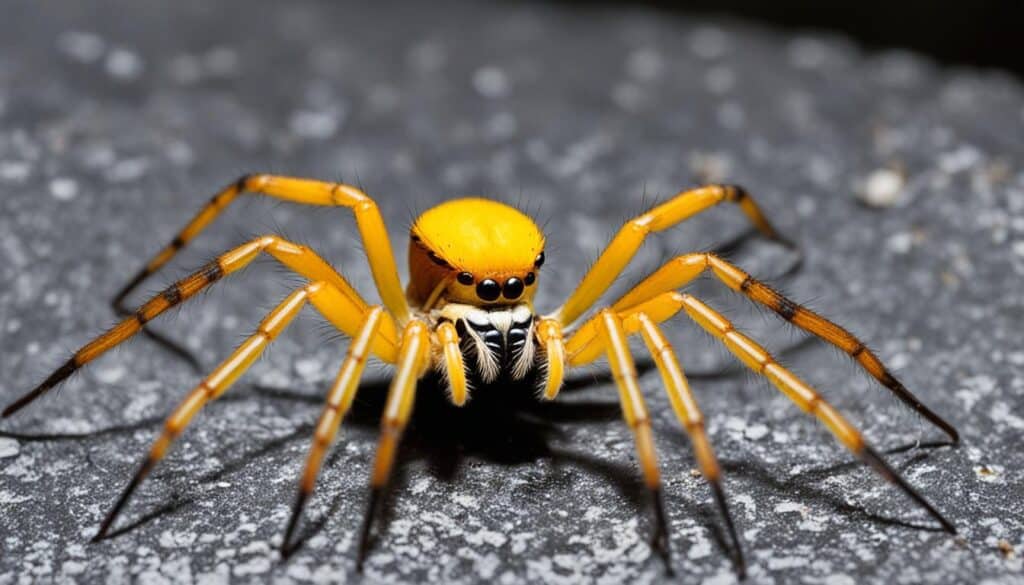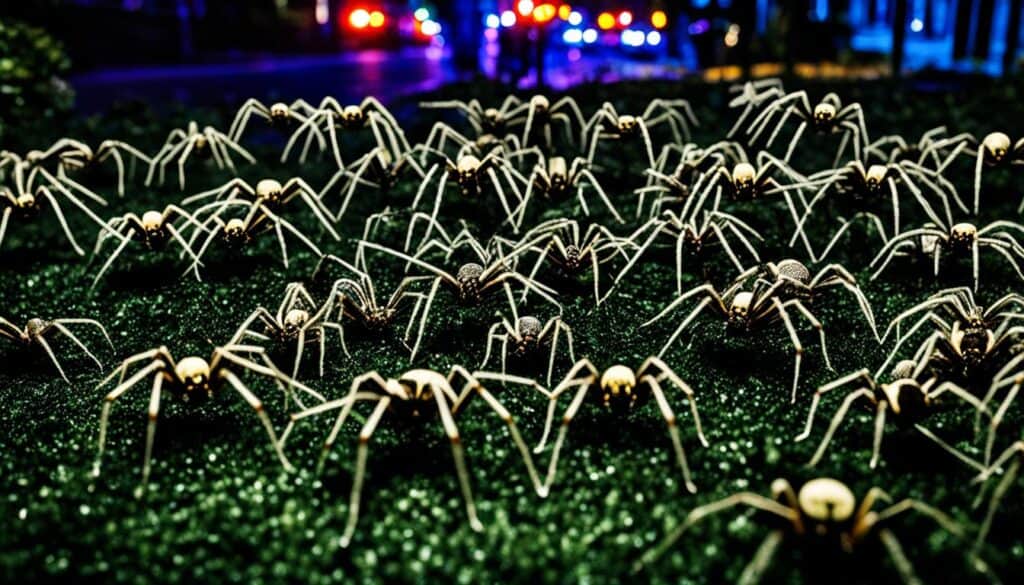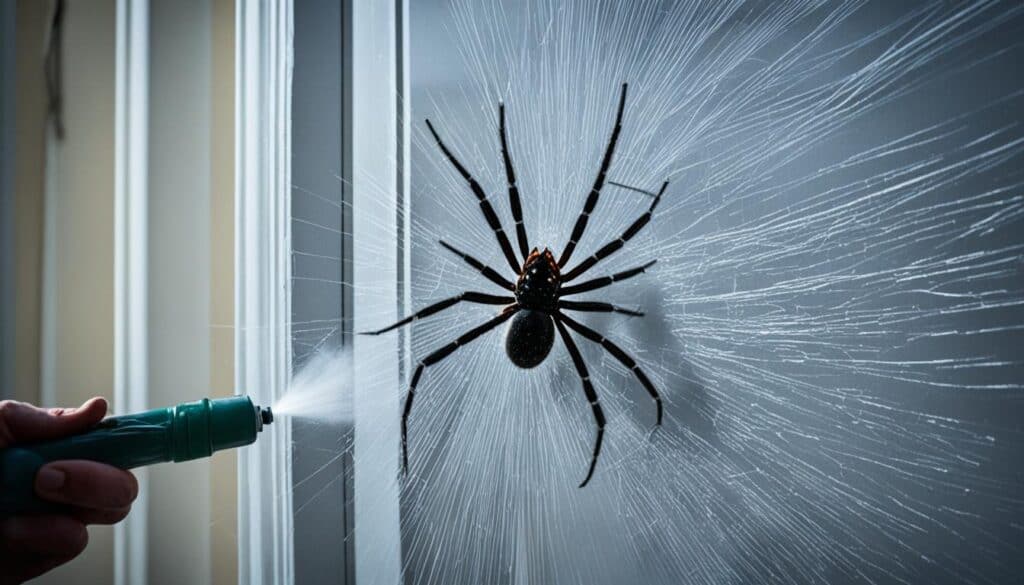Joro spiders have taken over 23 counties in Georgia in only eight years. For those living on the East Coast, it’s time to get ready. These spiders, known as Trichonephila clavata, are from East Asia. They’re gaining attention for their size, growth speed, and venom.
Joro spiders might be venomous, but they’re unlikely to harm you. They’re incredibly shy and can freeze in place for hours if disturbed. These spiders have also adapted to living in cities. They lay hundreds of eggs, ranging from 400 to 1500.
Using a ballooning method, they’ve traveled across states like Georgia, South Carolina, and Tennessee. They create huge, amazing webs up to 10 feet wide. Despite mixed feelings about them, Joro spiders seem to be here to stay. Luckily, they pose no real threat to humans or animals.
Key Takeaways
- Joro spiders have spread to at least 23 counties in Georgia in just eight years.
- Each egg sac can contain between 400 to 1500 eggs!
- Their incredible reproductive potential aids their rapid spread.
- Despite being venomous, Joro spiders are harmless to humans and pets.
- They are extremely shy, remaining motionless for hours when disturbed.
Introduction to the Joro Spider
Let’s explore the unique world of the Joro spider, a creature that catches many eyes. Originally from East Asia, these spiders are known for their dramatic looks. Femfemales sport vibrant yellow and grey bodies and can have legs up to 4 inches wide. Compared to them, the males are much smaller and less colorful.
These spiders create strong, beautiful yellow-gold silk webs. Their web design seems like it’s from a fairy tale. They mainly live in places like Georgia and South Carolina, experiencing their fascinating life cycle.
Their journey starts from egg sacs that hold 400-1500 eggs, hatching the next year. As adults, they’re easier to spot, especially in warmer months. That’s when they’re fully grown and make big, golden webs.
Although they might look scary, Joro spiders are not dangerous to us or our pets. At most, a bite can cause a little itchiness. Knowing about their life can take away some of the fear of these colorful spiders.
Joro spiders can be found in unexpected spots, thanks to their ability to “balloon.” They release silk that catches the wind, letting them fly to new places. It’s a pretty cool way to travel!
Next time you see a gold web, it might be a Joro spider. They’re not just nice to look at; they eat pests like stink bugs too. While their effect on local ecosystems is still studied, they help control some insects. It seems they’ve made themselves at home here, coming all the way from Asia.
Joro Spider Invasion Overview
So, how did these eight-legged invaders start making waves on the East Coast? It all started around 2014 with the first sightings in Georgia. Some think they might have arrived as early as 2010. These colorful spiders have quickly adapted to different places. This has made people both excited and a bit worried about their spread.
The Joro spider’s invasion has been dramatic. They spread rapidly, moving through the air like they’re flying. This method has helped them reach many states. Now, they’re in places like Georgia, South Carolina, and Maryland. And it looks like they won’t stop there.
What’s amazing is how Joro spiders handle cold weather. With a fast metabolism and a heart that beats 77% faster than their cousins, they’re hardy. It’s like they’re always running a marathon and dancing ballet. Pretty impressive, right?
Recent research in 2023 by the University of Georgia says these spiders could spread even more. They might soon be off to New York and New Jersey. They’ve taken over in Japan, which has weather like ours. So, they could do well here too.
<m
Humans have helped Joro spiders travel far and wide. They hitch rides with our global traffic. This includes international trade, cargo shipments, and even when we travel.
The Joro spider’s march continues along the East Coast. More suitable places for them to live are appearing. This story intrigues us, even if it’s slightly eerie. Many are watching eagerly to see what happens next—ready with their slippers, just in case.
Impact on the Ecosystem and Native Species
Ever met an uninvited guest who overstayed? Say hello to the Joro spider! It arrived in the U.S. in 2013. Since then, it’s made a home across Georgia and the Southeast. Scientists are buzzing about its ecological impact.
These spiders are pushing out native ones for the best spots. With their lightning-fast metabolism and cold resistance, Joros could spread across the East. The University of Georgia thinks they could become as widespread as TikTok trends. Plus, these spiders can ride the wind to new places!
Joro spiders change the game for local prey and predators. They eat lots of insects in their big, strong webs. It’s like a buffet for them! But it’s hard to say how this will affect the ecosystem. They impact both native and invasive species.
Humans help these spiders spread, sometimes without knowing. Like when a student took one to Oklahoma. They hitch rides in vehicles and luggage, spreading quickly.
And yet, these spiders aren’t a threat to us or pets. They may look scary, but there’s no need for a spider hunt. We can live with them without fear.
Human Interaction and Safety
Let’s talk about the Joro spider, a topic that’s been stirring up fear lately. But there’s no need to worry about our safety around them. Their venom effects target only their insect meals, so they’re harmless to us and our pets. To our furry friends, Joro spiders are as scary as a friendly yoga teacher.
So, why all the worry? These spiders mind their own business and avoid trouble. When they see us, they either stop dead in their tracks or run away quickly. It’s like they’re playing a game of freeze tag or rushing to a very important meeting.
Misinformation has made us unnecessarily scared of these spiders. The truth is, we can live together in peace. Rather than using bug spray, let’s learn from a University of Georgia study. It shows Joro spiders are good at keeping pests away. Next time you see one, just acknowledge it and move on. Living peacefully with spiders is simpler than we thought.
Conclusion
So, what have we learned about these giant Joro spiders with their eye-catching yellow and black designs? These creatures hail from Japan. They have legs that stretch 4 inches long and can glide in the air. And they might even visit New York soon. But let’s replace fear with facts about these spiders.
Joro spiders are indeed invasive. They’ve settled in from Georgia and might spread further. They reproduce quickly, much faster than your Wi-Fi can fail you. They shake up the local wildlife but aren’t the monsters some think. Instead, they help by eating pests, which saves us money on pesticides.
The idea that Joro spiders are dangerous to humans is a myth that needs clearing up. Their venom affects only their insect meals, and at most, might mildly bother people. There’s no need for extreme measures against them. Experts like David Coyle and a Rutgers University ecologist emphasize educated interactions. We should aim for a peaceful coexistence with these spiders. They’re becoming part of our environment, so we might as well learn to live together responsibly.




